Discovering The Power Of Breath: Exploring Pranayama In Yoga
10 March, 2023
Pranayama is a Sanskrit term that is often translated as "breath control" or "breath regulation." It is an essential practice in yoga Rishikesh that involves various breathing techniques aimed at balancing the mind, body, and spirit. The term Pranayama is derived from two words, "prana" and "ayama," where prana refers to the vital life force that animates the body, and ayama means "to extend" or "to expand." Therefore, Pranayama can be translated as the expansion and control of the life force energy through the breath.
Pranayama is a powerful practice that offers many physical, mental, and spiritual benefits. It is an integral part of yoga, and it is said to be one of the most effective ways to purify the body and mind. The practice of Pranayama involves various breathing exercises that bring awareness to the breath, increase lung capacity, and improve the flow of prana in the body. It is essential to practice Pranayama under the guidance of a qualified teacher, as some techniques can be challenging and may require proper instruction and supervision. It is also important to practice Pranayama in a safe and quiet environment, free from distractions and interruptions.
Different Pranayama
Pranayama is a Sanskrit term that refers to various breathing techniques that aim to balance the mind, body, and spirit. There are many types of yoga courses in Rishikesh , each with its own unique benefits and effects. Here are some of the most common types of Pranayama and their benefits:
Nadi Shodhana (Alternate Nostril Breathing)
Nadi Shodhana is a popular Pranayama technique that involves alternating the flow of breath through the nostrils. This technique is said to balance the left and right hemispheres of the brain, improve focus and concentration, and reduce anxiety. It also helps to purify the energy channels in the body, making it an excellent practice for those who want to deepen their yoga practice.
To practice Nadi Shodhana, sit in a comfortable position with your spine straight and your eyes closed. Place your left hand on your left knee, with your palm facing up, and your right hand in front of your nose. Use your right thumb to close your right nostril and inhale deeply through your left nostril. Hold your breath for a few seconds, then use your right ring finger to close your left nostril and exhale through your right nostril. Inhale through your right nostril, hold your breath, and then exhale through your left nostril. Repeat this cycle for several rounds, focusing on the breath and the movement of the prana through the body.
Ujjayi Pranayama (Victorious Breath)
Ujjayi Pranayama is a deep breathing technique that involves constricting the throat to create a soft, whispering sound as you inhale and exhale. This technique is said to calm the mind, reduce stress and anxiety, and improve concentration and focus. It also helps to improve lung capacity and increase the flow of oxygen to the brain.
To practice Ujjayi Pranayama, sit in a comfortable position with your spine straight and your eyes closed. Inhale deeply through your nose, constricting the back of your throat to create a soft, whispering sound. Hold your breath for a few seconds, then exhale through your nose, constricting your throat again to create the same sound. Repeat this cycle for several rounds, focusing on the sound of the breath and the movement of the prana through the body.
Kapalabhati Pranayama (Skull-Shining Breath)
Kapalabhati Pranayama is a powerful breathing technique that involves rapid, forceful exhalations through the nose, followed by passive inhales. This technique is said to stimulate the digestive system, increase energy levels, and clear the mind. It also helps to purify the energy channels in the body, making it an excellent practice for those who want to deepen their yoga practice.
To practice Kapalabhati Pranayama, sit in a comfortable position with your spine straight and your eyes closed. Take a deep breath in, then forcefully exhale through your nose, using your abdominal muscles to push the air out quickly. As you exhale, your belly should contract. Relax your abdominal muscles and inhale passively through your nose. Repeat this cycle for several rounds, focusing on the movement of the breath and the energy in the body.
Bhramari Pranayama (Bee Breath)
Bhramari Pranayama is a gentle breathing technique that involves making a humming sound as you exhale. This technique is said to calm the mind, reduce stress and anxiety, and promote a sense of inner peace and harmony. It also helps to improve concentration and focus, making it an excellent practice for those who want to deepen their meditation
The Bottom Line
In conclusion, the practice of Pranayama is a powerful tool for promoting physical, mental, and spiritual health and well-being. It is an integral part of yoga and can be a valuable addition to any wellness routine. Whether you are a beginner or an experienced practitioner, incorporating Pranayama into your daily practice can help you cultivate a deeper connection with your breath, increase vitality and energy, and achieve a greater sense of inner peace and harmony.
Sattva Yoga Academy, a nonprofit organisation that establishes requirements for yoga teacher training in Rishikesh , has received accreditation from the Yoga Alliance. In the yoga world, a recognised programme offers more legitimacy and acknowledgment. Hence, we now have the best yoga training facility where you can discover the meaning of life.

